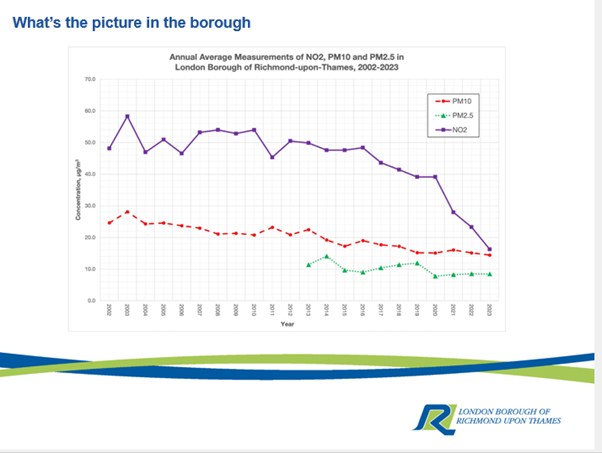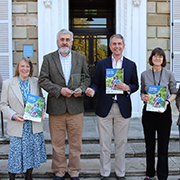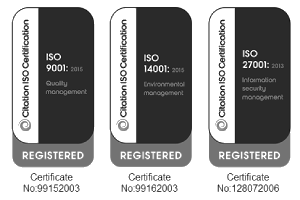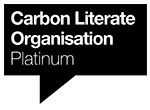Tackling air pollution in Richmond
Cllr Alexander Ehmann, Chair of the Transport and Air Quality Services Committee, gives an overview of the efforts in his borough to improve air quality and health outcomes.
Richmond upon Thames is a wonderful place to live – known for our beautiful green spaces, historic town centre and of course, being home to the world-famous Kew Gardens. It’s a borough I call home and live here with my young family and care deeply about health of our residents and the environment we all share.
Even in a green borough like ours, air pollution remains a serious challenge. Although we’re fortunate to have such beautiful surroundings, like all London boroughs, we are affected by air pollution. It is the single biggest environmental risk to human health, contributing to conditions such as asthma, COPD, and even neurodegenerative diseases like Alzheimer’s. That’s why tackling poor air quality has been a priority for us as a council.
Since 2019, Richmond upon Thames has seen significant reductions in air pollution, particularly nitrogen dioxide. While we can’t take full credit (improvements such as cleaner buses, more electric vehicles, and the expanded ULEZ have all helped) we’ve played a leading local role in making our borough cleaner and healthier.

When we were elected, we committed to meaningful action. We established a new Transport and Air Quality Committee to improve coordination and accountability. We worked closely with passionate local campaigners, community groups, and health experts to shape our direction. This collaboration, alongside national developments like the tragic case of Ella Adoo-Kissi-Debrah – the first recorded death directly linked to air pollution – made clear that the time to act, and act boldly, was now.
We’ve introduced a boroughwide 20mph speed limit to make streets safer for walking and cycling — backed by air quality assessments showing no adverse impact. We also championed London’s first wave of low-cost monitoring with Breathe London and continue to maintain one of the most robust air quality monitoring networks in the capital.
We’ve targeted pollution hotspots, using data to guide our actions. We’ve supported active travel with high-quality cycle routes in Kew, Barnes and Strawberry Vale, and now have the highest number of EV charge points per capita in outer London.
Our School Streets programme has expanded to 19 schools, backed by best-in-class signage and camera enforcement. Where physical school streets aren’t possible, our air quality team runs a schools assessment programme to monitor pollution and deliver on-site solutions, such as green screens and filtration systems. We also launched the Good Move scheme to help residents transition from non-ULEZ-compliant vehicles by offering incentives to join car clubs, use public transport or cycle instead. It’s now available to all residents and is helping to support cleaner travel choices across the borough.
.jpg)
One of the things I’m most proud of is our new Air Quality Action Plan – brought forward a year ahead of schedule and developed in partnership with our community. Residents were invited to challenge and shape the plan through workshops, surveys, drop-ins and school sessions. It’s bold, realistic, and tailored to our borough’s needs. We’re delighted to see it recently awarded Air Quality Strategy of the Year at the Fleet Vision International Awards.
And we’re not stopping there. We’ve committed to the UK’s strictest (yet achievable) local air quality standards. We’re preparing to introduce Public Space Protection Orders (PSPOs) to tackle engine idling. We’re also leading in areas many councils overlook, such as indoor air quality — piloting home assessments and collaborating with healthcare professionals to support those most at risk.
All of this shows that local action matters. With commitment and collaboration, we can make a real difference – and we will continue to do so for the health of our borough, now and for future generations.
Cllr Ehmann presented at the APSE Air Quality and Climate Change Online Seminar on Thursday 27 March, his presentation can be viewed on the APSE website.



.png)



.png)